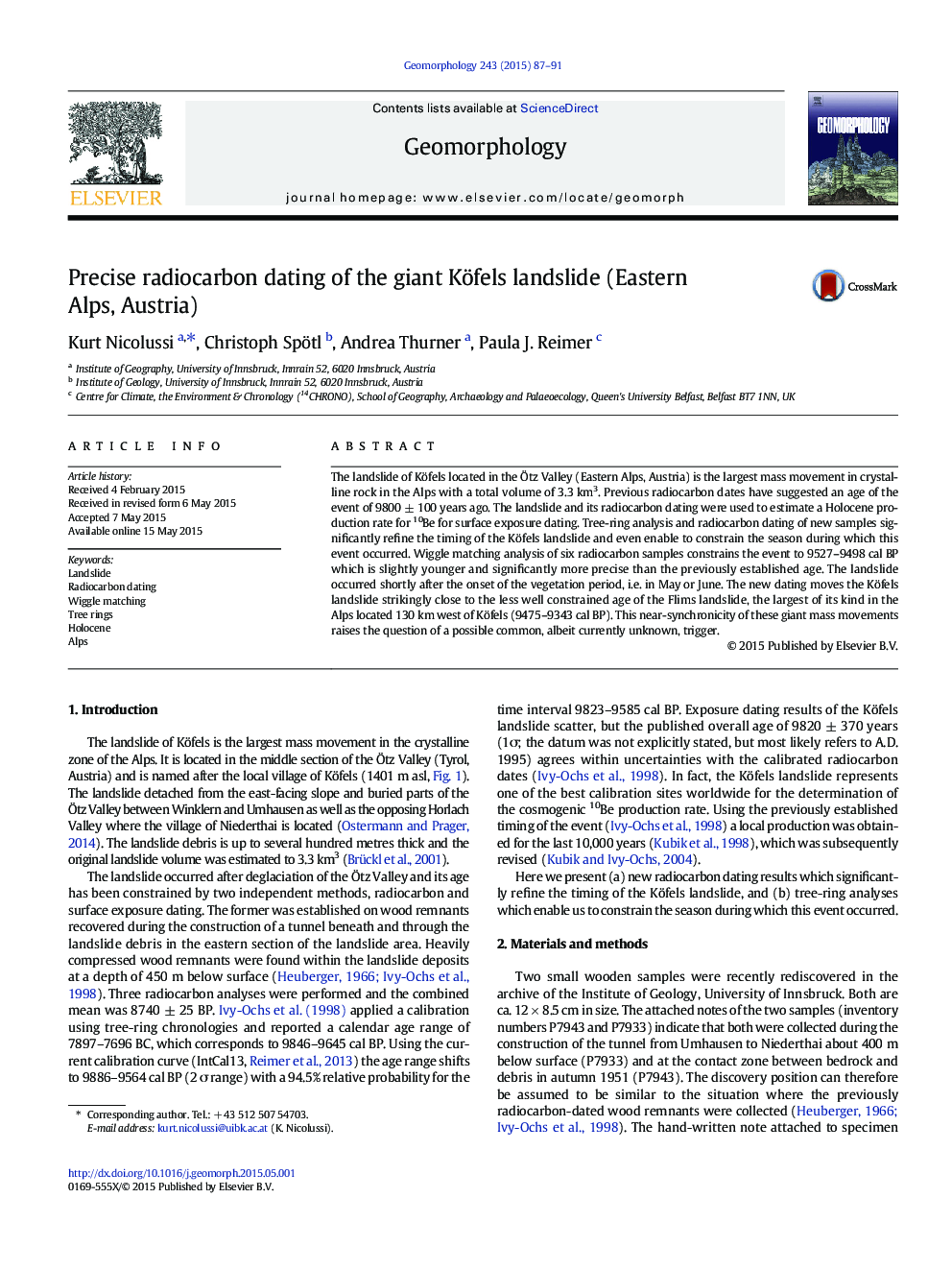| Article ID | Journal | Published Year | Pages | File Type |
|---|---|---|---|---|
| 4684200 | Geomorphology | 2015 | 5 Pages |
•New wood samples from the largest landslide in the crystalline zone of the Alps.•Precise wiggle-matched radiocarbon date for the Köfels event.•Tree-ring analysis allows defining the season during which the landslide occurred.•New Köfels date is close to the date of the giant Flims landslide.
The landslide of Köfels located in the Ötz Valley (Eastern Alps, Austria) is the largest mass movement in crystalline rock in the Alps with a total volume of 3.3 km3. Previous radiocarbon dates have suggested an age of the event of 9800 ± 100 years ago. The landslide and its radiocarbon dating were used to estimate a Holocene production rate for 10Be for surface exposure dating. Tree-ring analysis and radiocarbon dating of new samples significantly refine the timing of the Köfels landslide and even enable to constrain the season during which this event occurred. Wiggle matching analysis of six radiocarbon samples constrains the event to 9527–9498 cal BP which is slightly younger and significantly more precise than the previously established age. The landslide occurred shortly after the onset of the vegetation period, i.e. in May or June. The new dating moves the Köfels landslide strikingly close to the less well constrained age of the Flims landslide, the largest of its kind in the Alps located 130 km west of Köfels (9475–9343 cal BP). This near-synchronicity of these giant mass movements raises the question of a possible common, albeit currently unknown, trigger.
